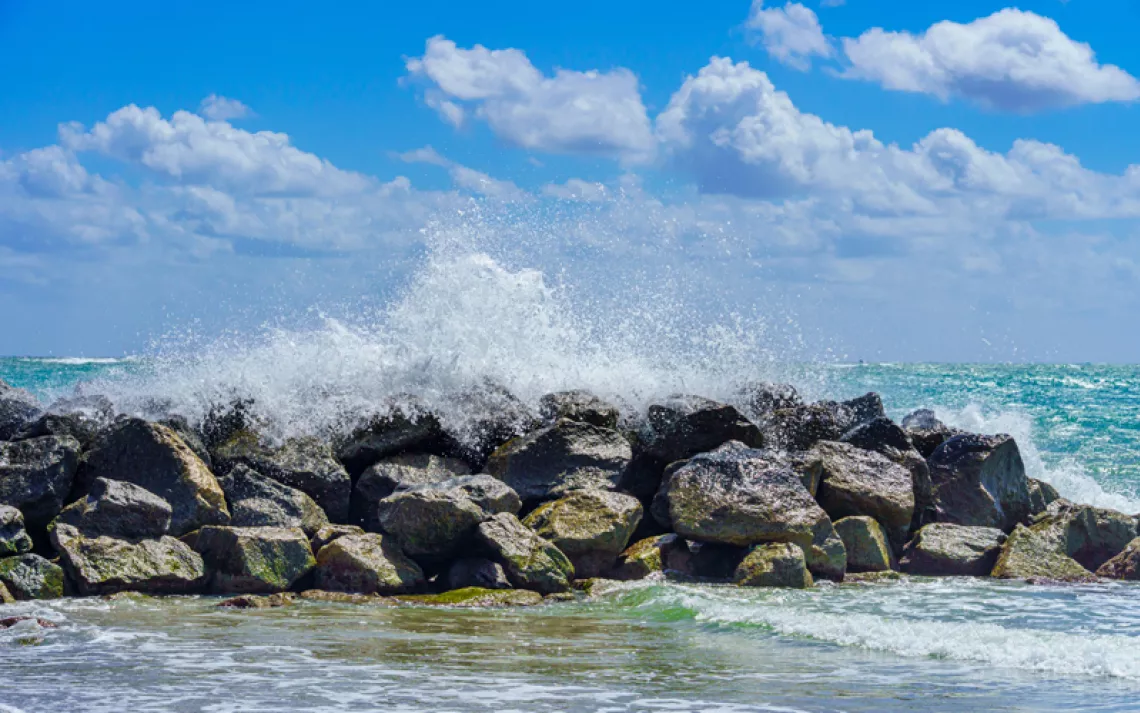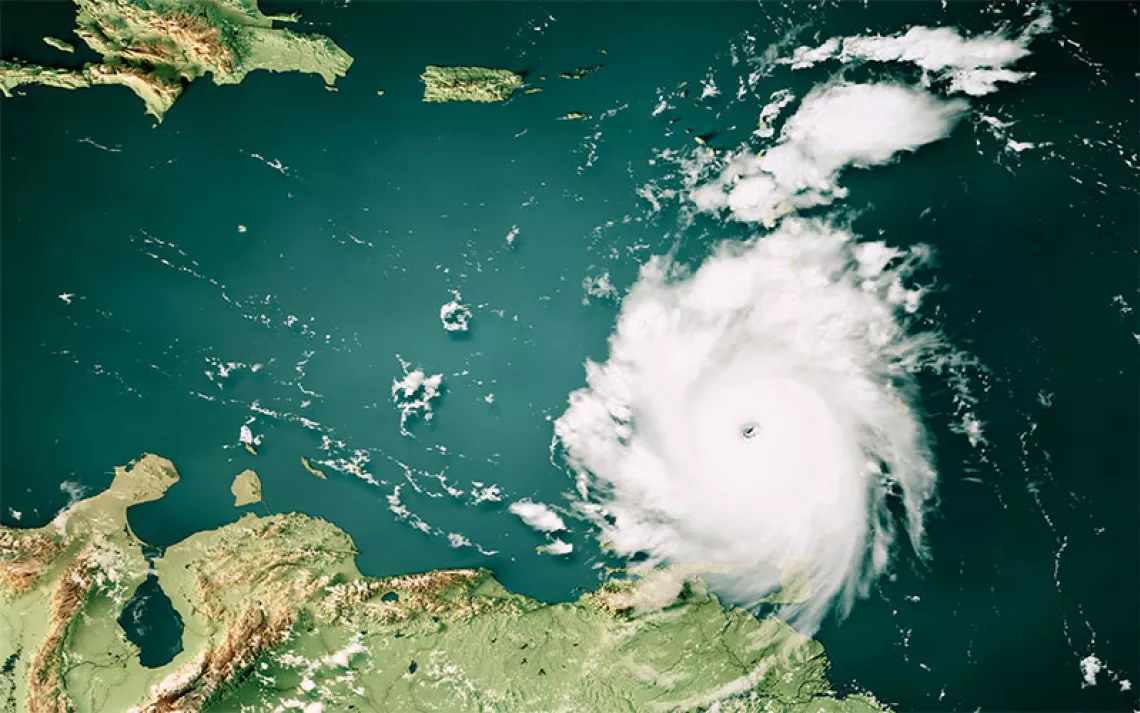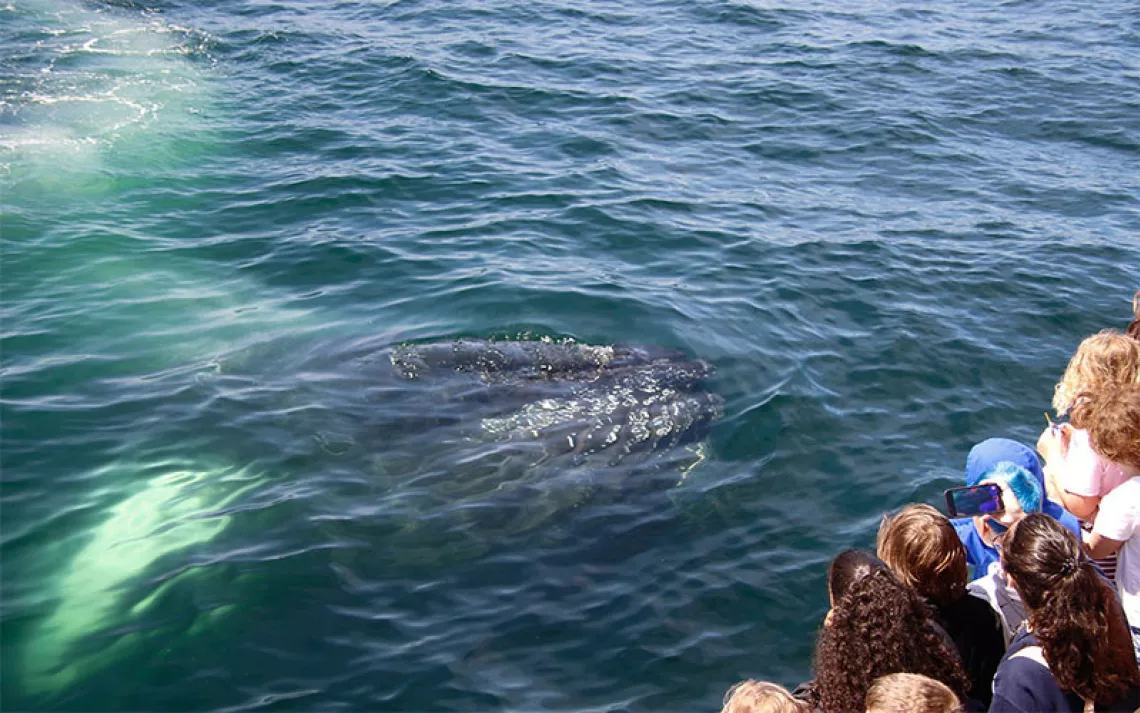We Saved These Tuna. We Can Save Some Sharks Too.
Global fisheries have to get serious if we want to save Shark Week
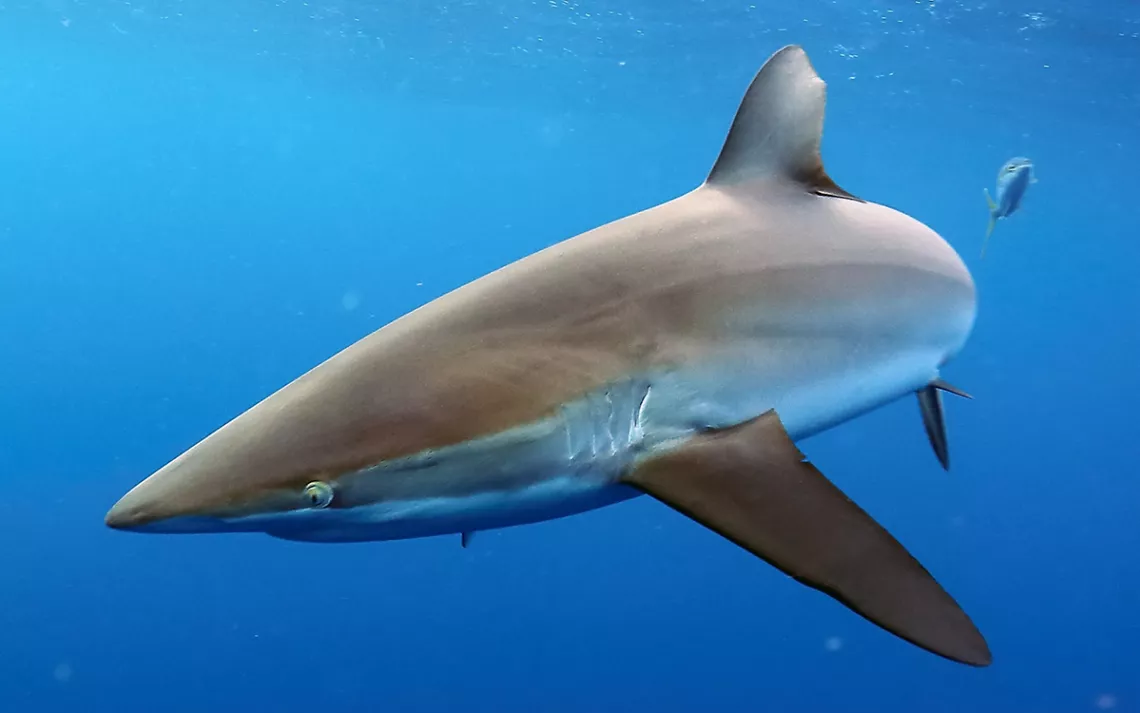
Silky shark, a.k.a. Carcharhinus falciformes. | Photo courtesy of Fabien Forget
When you are a scientist who loves biodiversity and loves the ocean, you quickly run into a problem, which is that most data on biodiversity is collected on land, where it’s much harder to drown. The ocean-related data that is collected in a somewhat regular and consistent manner tends to be collected by fisheries, which usually focus on maintaining the health and numbers of a particular fish with commercial value rather than an entire ecosystem.
But of course, a fish that people like to eat can also be a biodiversity indicator. That’s why Maria José Juan Jordá, a quantitative marine ecologist living in Madrid, along with a team of researchers based in Spain, the US, and Canada, dove deep into tuna, billfish, and shark data from international fisheries bodies, which have calculated the extinction risk of different species based on the International Union of the Conservation of Nature Red List Categories and Criteria, and compiled the results into a Red List Index since the 1950s. In a paper published last week in Science, Juan Jordá and her collaborators lay out signs of hope—and show just how far we are from a well-inhabited ocean.
Juan Jordá chose sharks, tuna, and billfish as proxies for biodiversity because they eat high on the food chain. They’re sleek and fast and use a lot of energy—hot rods of the sea, traveling thousands of miles over the course of their lives. Since they are voracious predators of fellow sea creatures, their presence indicates the existence of other fish, squid, and crustaceans.
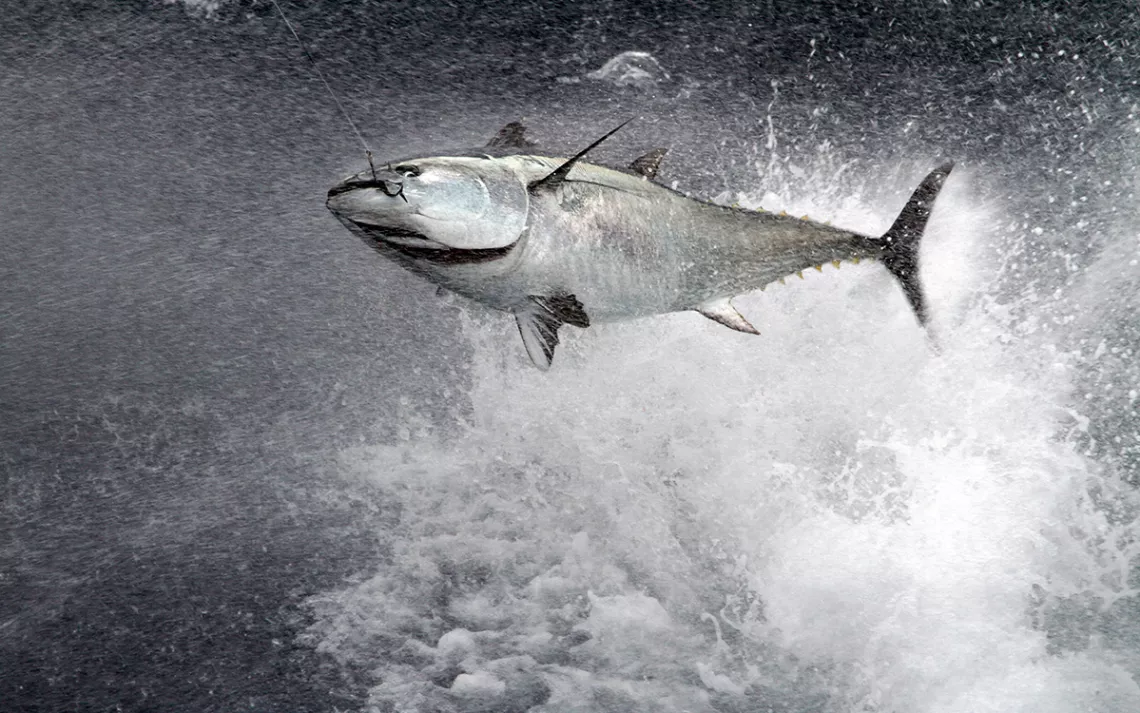
Bluefin tuna, a.k.a. Thunnus thynnus. | Photo courtesy of Iñigo Onandia
The data on tuna goes back the farthest. The first international tuna data-collection agreement was signed in 1949, between the United States and Costa Rica, just as motorized fishing boats and power block winches began to drastically increase the volume of fish that a single fishing vessel could bring in. Today there are five Tuna Regional Fishery Management Organizations (RFMOs) in which member nations try to hammer out catch limits, data collection, monitoring, and best practices for fishing.
RFMO data has problems—it’s self-reported, for one thing—but it’s clear that since the 1950s, global average fishing mortality for predatory fish like tuna, billfish, and sharks rose rapidly. By 2008, a Nature study found, the global abundance of sharks and rays in the ocean was a third of what it had been 50 years earlier. In a few decades, industrial fisheries had managed to reduce ocean wildlife in the pelagic zone to lows that had taken centuries to achieve on land, where humans have been hunting animals to extinction for thousands of years.
But the 1990s were also the years that the RFMOs began to agree on conservation and fisheries management measures. These organizations banned certain types of fishing and equipment, cracking down on both catch limits and illegal fishing. They required fishing vessels to install cameras or take observers on board, ensuring that the vessels weren’t overfishing or taking in too much bycatch. It wasn’t perfect and it wasn’t implemented everywhere, but it worked. After 2008, tuna and billfish populations began to rise again. They are now at the levels they were in the 1980s.
The same has not been true for sharks, whose numbers have continued to plummet. Unlike tuna and billfish, says Juan Jordá, sharks aren’t managed effectively, and more international collaboration is needed to collect accurate data and make assessments. Sharks are a valuable catch, eaten both by people who want to eat them and people who don’t know they’re eating them (a few years ago, a team of researchers from the UK used DNA barcoding to test fish- and-chips from local shops and found the fish was often mislabeled shark). But the species that Juan Jordá focused on—the silky sharks and oceanic whitetip sharks—are typically caught as bycatch to more lucrative tuna. Sharks may be near a school of tuna because they’re hunting them, but that’s not always the case; underwater cameras in the Pacific, Atlantic, and Indian Oceans have recorded tuna scratching themselves on nearby sharks as though they were loofahs.
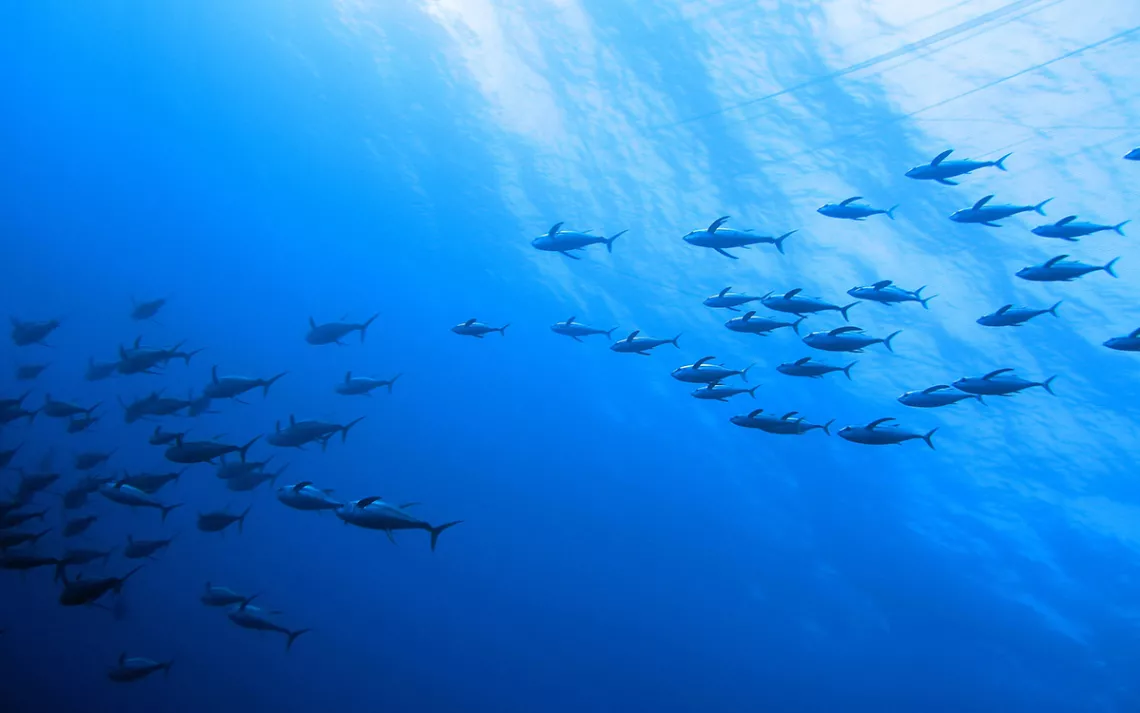
A school of tuna. | Photo courtesy of David Itano
Juan Jordá has seen firsthand how following conservation best practices can reduce shark bycatch. She once spent 30 days aboard a 110-foot tropical tuna purse seiner, a vessel that catches tuna by encircling and scooping up a school of them like a ladle; purse seiners are responsible for the vast majority of tuna caught worldwide. In the Indian Ocean, it’s prohibited to hunt tuna by chasing pods of dolphins (unlike in the Pacific, where purse seiners can still set nets around dolphin pods as long as they release the dolphins before pulling up the net).
The boat Juan Jordá was on used fish aggregating devices to lure tuna. FADs are controversial—they also lure sharks and other species, and they may lure tuna too well, since tuna found around them tend to be underweight, meaning that the lure could possibly be distracting them from looking for food. But the vessel did have an observer on board cataloging the species being caught (all tropical tuna purse seiners licensed in the European Union have to have either a human observer or cameras onboard). Workers on board also followed a set of approved methods for returning bycatch like sharks and rays to the ocean in a way that tried to minimize stress and injury. (Cut them loose while they’re still in the water if possible; no holding by the fins or tail; lower, don’t toss off the side of the boat). The newest generation of purse seiners that Juan Jordá saw had specialized equipment for returning accidentally caught wildlife to the ocean, including two conveyor belts for sorting every load—one for lucrative, legal fish and another that trundled bycatch directly out of the boat again.
Not every fishing boat is like the one that Juan Jordá did her research on—not by a long shot. But more of them could be. “A whole lot of things need to happen,” says Juan Jordá. “We need better statistics. We need political will. There is no one bullet hole—you call it like a silver bullet solution. Depending on the species of shark, depending on the fishery, depending on the context, you will need a different set of management measures working together to effectively reduce shark mortalities.”
But Juan Jordá’s research makes clear that big, hungry, long-lived, slow-growing fish like tuna and billfish can recover if conservation measures are implemented. And it means that, potentially at least, there’s no limit to how much else we can save too.
 The Magazine of The Sierra Club
The Magazine of The Sierra Club

